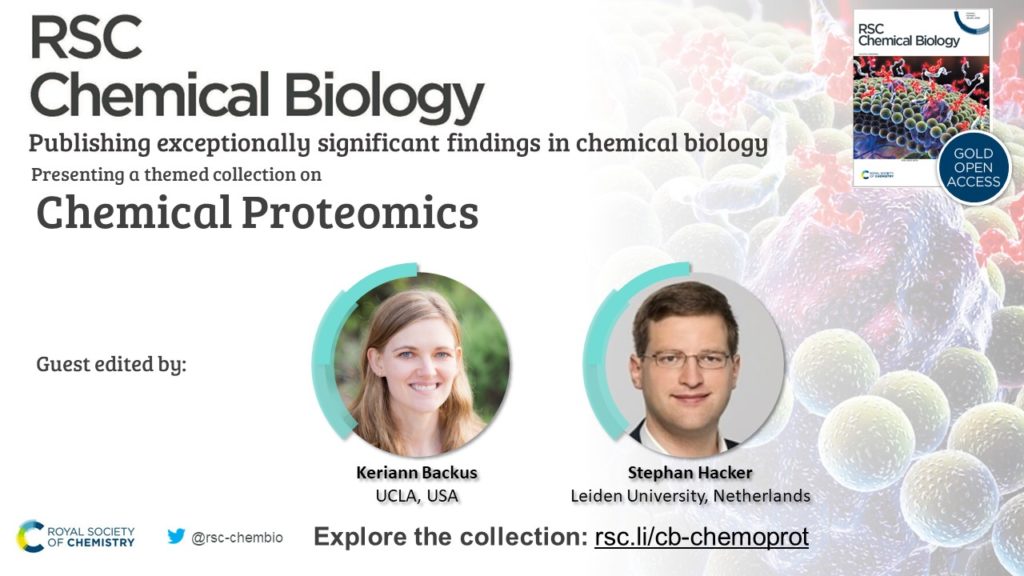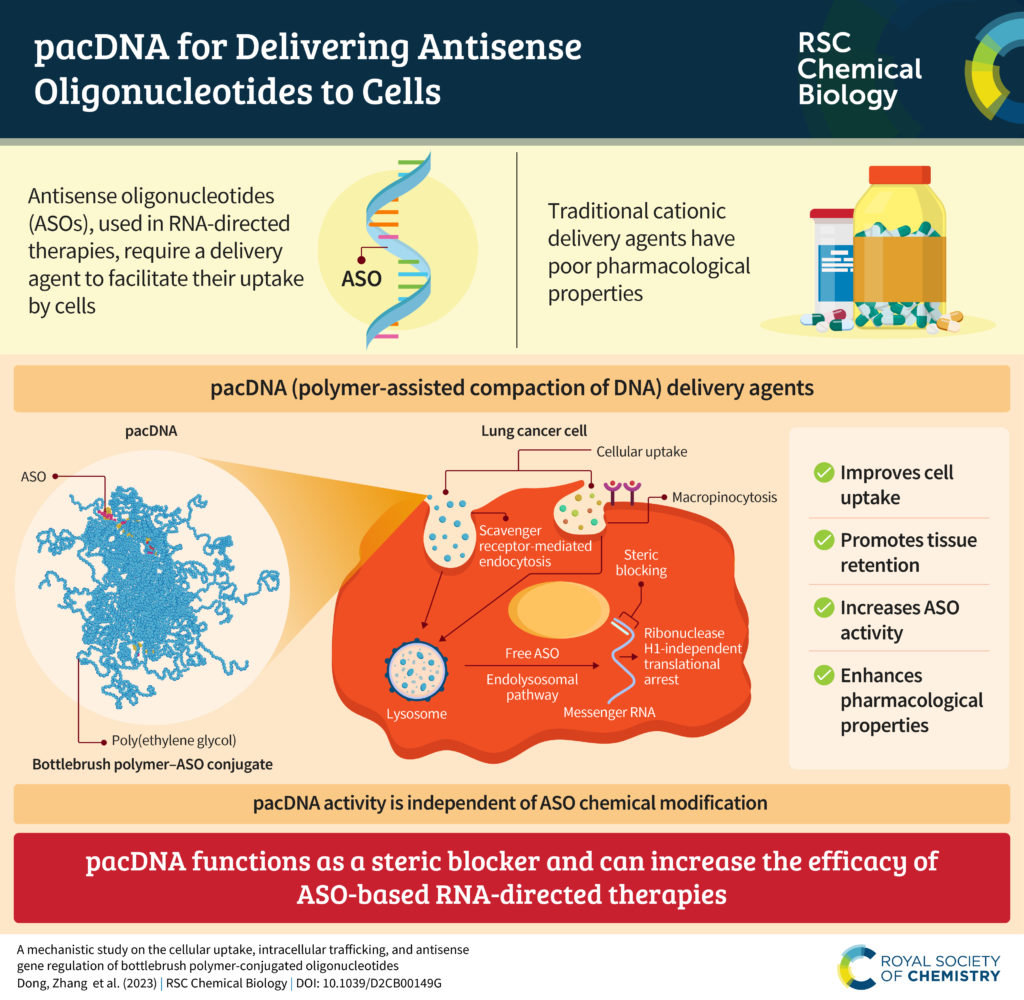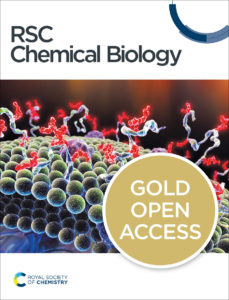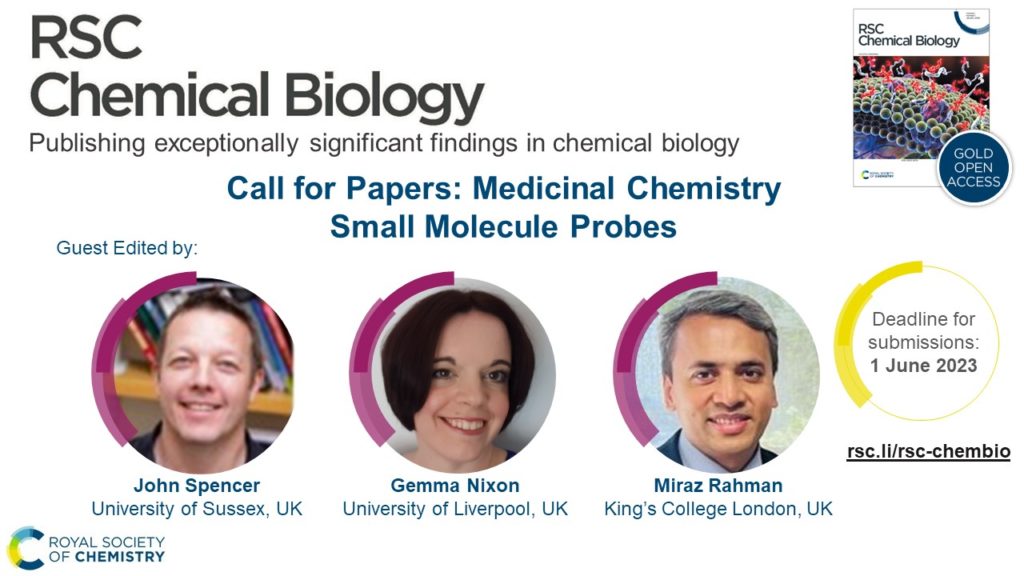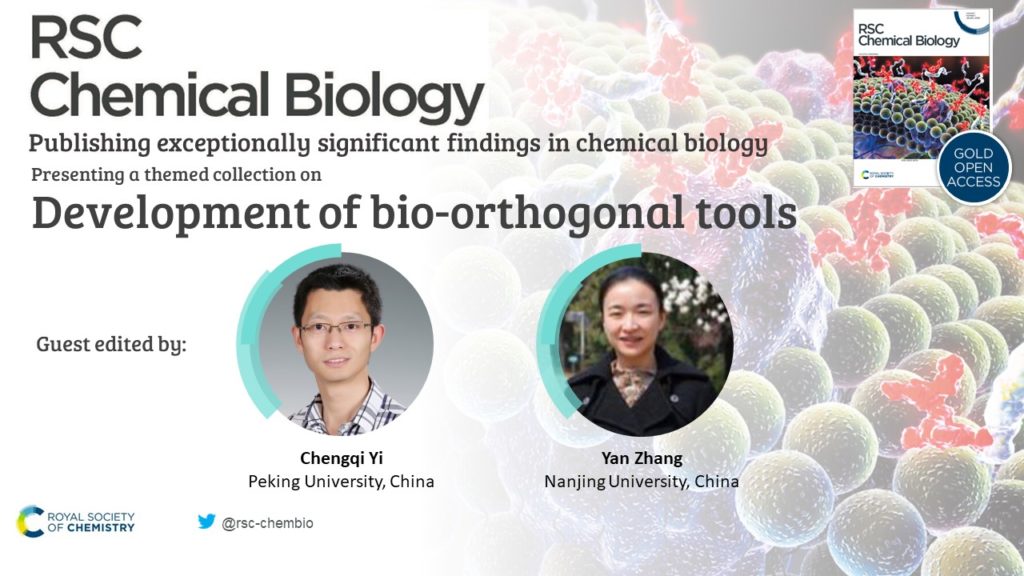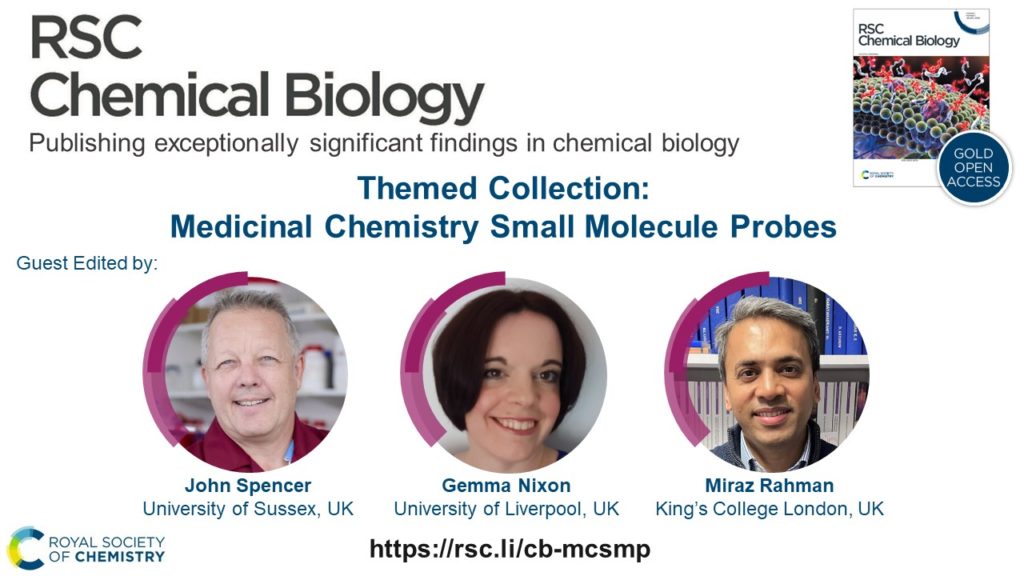
We’re pleased to announce that a new themed collection from RSC Chemical Biology has now been published online!
This themed collection is Guest Edited by Prof. John Spencer (University of Sussex, UK), Dr Gemma Nixon (University of Liverpool, UK), and Prof. Miraz Rahman (King’s College London, UK). It features contributions which investigate general medicinal chemistry, chemical probes for imaging, proteomics, PROTACs, fragment-based drug discovery, covalent binders, chemical tools for protein profiling and activity modulation, and natural product inspired medicinal chemistry and chemical biology.
A small selection of the articles has been provided below – please visit the link above for the full collection. All articles in RSC Chemical Biology are open access and free to read.
Editorial
Introduction to ‘Medicinal Chemistry Small Molecule Probes’
Gemma Nixon, Miraz Rahman and John Spencer
RSC. Chem. Biol., 2024, 5, DOI: 10.1039/D4CB90005G
Opinion
Chirality: a key parameter in chemical probes
Andrew McGown, Jordan Nafie, Mohammed Otayfah, Storm Hassell-Hart, Graham J. Tizzard, Simon J. Coles, Rebecca Banks, Graham P. Marsh, Hannah J. Maple, George E. Kostakis, Ilaria Proietti Silvestri, Paul Colbon and John Spencer
RSC. Chem. Biol., 2023, 4, 716–721, DOI: 10.1039/D3CB00082F
Reviews
PROTAC chemical probes for histone deacetylase enzymes
Urvashi Patel, Joshua P. Smalley and James T. Hodgkinson
RSC. Chem. Biol., 2023, 4, 623–634, DOI: 10.1039/D3CB00105A
Antitumour imidazotetrazines: past, present… and future?
Malcolm F. G. Stevens and Richard T. Wheelhouse
RSC. Chem. Biol., 2023, 4, 736–741, DOI: 10.1039/D3CB00076A
Papers and Communications
Virtual screening, identification and in vitro validation of small molecule GDP-mannose dehydrogenase inhibitors
Jonathan P. Dolan, Sanaz Ahmadipour, Alice J. C. Wahart, Aisling Ní Cheallaigh, Suat Sari, Chatchakorn Eurtivong, Marcelo A. Lima, Mark A. Skidmore, Konstantin P. Volcho, Jóhannes Reynisson, Robert A. Field and Gavin J. Miller
RSC. Chem. Biol., 2023, 4, 865–870, DOI: 10.1039/D3CB00126A
A cell-permeable probe for the labelling of a bacterial glycosyltransferase and virulence factor
Yong Xu and Gerd K. Wagner
RSC. Chem. Biol., 2024, 5, 55–62, DOI: 10.1039/D3CB00092C
We hope you enjoy this new themed collection from RSC Chemical Biology.



